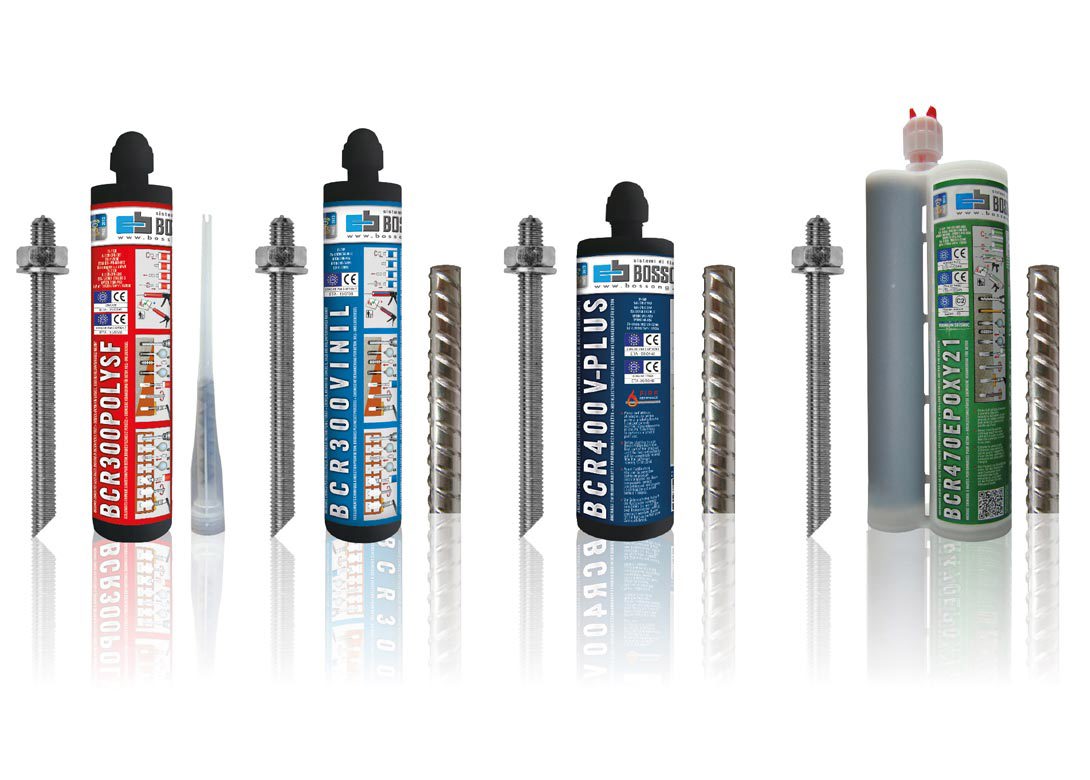
Here Bossong SpA, with its complete range of high-quality chemical anchors, manufactured in its main plant in Bergamo, Italy, explains how the use of chemical anchors is continuously growing within the market thanks to their flexibility and the possibility of installation in every type of base material.
For some base materials such as hollow and solid masonry, AAC, and lightweight concrete, the chemical anchor is the best solution, because it doesn’t create any tension on the base material during the installation.
In terms of flexibility, a chemical anchor enables the possibility to anchor the rebar, for example with the post-installed rebar connection and also to design fixings with variable setting depth. The possibility to increase the setting depth up to 20 times the diameter of the threaded rod gives the designer the option to have a higher resistance load with respect to a mechanical anchor.
All the chemical anchors produced by Bossong are styrene-free and have a thixotropic consistency, in order to allow overhead installation. The range of chemical anchors is composed by:
- POLY EC: Polyester resin without ETA-CE certification, for medium/light loads and for use in different base materials such as concrete, solid and hollow masonry.
- POLY SF: Polyester resin with double ETA-CE certification, for medium loads and for different base materials. Also available, the POLY SF chemical anchor is assessed for use in solid and hollow masonry (ETA – 11/0396) and for fixing in non-cracked concrete (ETA – 15/0560).
- VINIL: Epoxy acrylate resin with ETA-CE certification, for medium/high loads, suitable for all base materials. The VINIL chemical anchor is assessed for fixing threaded rod and rebar in non-cracked concrete (ETA – 15/0708).
- V-PLUS: Vinylester resin with double ETA-CE certifications, for high/structural loads, suitable for all base materials and for all weather conditions. The V-PLUS chemical anchor is assessed for fixing concrete with threaded rods and rebar (ETA – 09/0140). The certification includes static and also seismic performance, with seismic category C1 and C2.
In addition to the first ETA for fixing the V-PLUS chemical anchor is assessed also for the post-installed rebar connections (ETA – 09/0246). For this ETA the performances included in the certification are static, seismic and also fire. This fixing is also available in Winter and Tropical version for temperature of base material from -20°C to +40°C. - EPOXY 21: Pure epoxy resin with double ETA-CE certification, for very high/structural loads, suitable for all solid base materials and for diamond drilling hole up to 2,000mm. The EPOXY 21 chemical anchor is assessed for fixing concrete with threaded rods (ETA – 11/0344). The certification includes static and also seismic category C2. The EPOXY 21 chemical anchor is also assessed for post-installed rebar connections (ETA – 11/0345). For this ETA the performances included in the certification are only the static one, but the product has a separate report for the fire resistance.

Having spent a decade in the fastener industry experiencing every facet – from steel mills, fastener manufacturers, wholesalers, distributors, as well as machinery builders and plating + coating companies, Claire has developed an in-depth knowledge of all things fasteners.
Alongside visiting numerous companies, exhibitions and conferences around the world, Claire has also interviewed high profile figures – focusing on key topics impacting the sector and making sure readers stay up to date with the latest developments within the industry.






